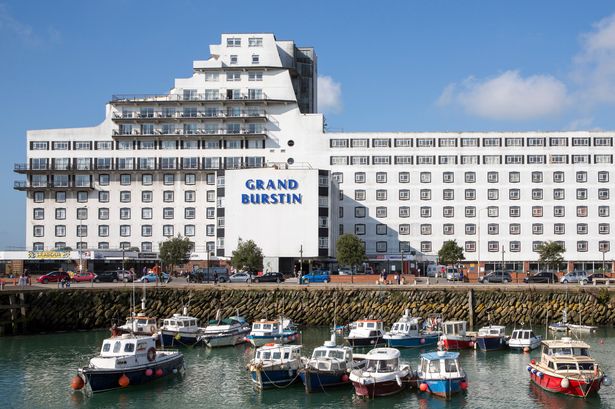Consumer group Which? has ranked hotels based on customer feedback – with pub chain Wetherspoons given a ‘great value’ gong and Premier Inn losing Recommended Provider status as it slips down the list
The Britannia Hotels chain has been ranked the worst place to stay for the 12th year running in a poll, as Wetherspoons beat Premier Inn and took home the ‘top value’ prize.
Consumer group Which? gave Britannia, with more than 60 sites, a lowly customer score of just 44%. It managed just one star out of a possible five for the quality of its bedrooms and bathrooms.
One Britannia customer at the Grand Burstin Hotel in Folkestone, Kent, described witheringly as a “total dive”. Another said they had three nights booked but left after one because of the poor service, room and food.
READ MORE: Beautiful small town perfect for autumn is home to one of the world’s best hotelsREAD MORE: UK’s 5 most ‘underrated’ Christmas markets that offer ‘better value and local crafts’
Britannia’s chain include a number of historic and landmark hotels. They include Liverpool’s famous Adelphi, which scores just 2.6 out of possible five on Tripadvisor as the website says guests “frequently cite noise issues due to thin walls”. Britannia’s Grand Hotel in Scarborough gets an even lower 2.4 on Tripadvisor, which says rooms are “basic and dated, with mixed reports on cleanliness.”
The firm’s hotel in London’s Docklands has been the scene of protests amid reports it was being used to house asylum seekers. It has been given a score of 2.8 on Tripadvisor. The Britannia group is controlled by tycoon Alex Langsam, who also owns holiday camp Pontins and was criticised after its Southport’s site sudden closure in early 2024.
The Mirror confronted Mr Langsam at the time at his 10-bedroom mansion in Cheshire. But when asked if he had anything to say to the workers who left in tears, he claimed: “It’s nothing to do with me, I am nothing to do with Pontins.”
Top in the Which? large hotel category was a pub chain with 35 inns. The Coaching Inn Group received a customer score of 81%, with “often historic buildings located in beauty spots or market towns where they aim to be ‘the best venue in town’.”
Pub giant JD Wetherspoon, which has over 50 hotels across the country, was also praised. It came fifth and was the only chain to be awarded a Which? Great Value badge. At just £70 for an average night’s stay, Wetherspoons got four stars for value for money and the majority of other categories, including customer service. One guest commented that the hotel was “clean, comfortable and good value”.
It came above Premier Inn, which slipped to seventh in the large chain table, and lost the Which? Recommended Provider status. While customers still ranked Premier Inn’s beds as some of the most comfortable in the survey, some guests told Which? their stay wasn’t good value and suggested that standards were slipping.
One guest said that “Premier Inn has lost its way. Prices no longer budget levels and service is no longer a priority”. An average night’s stay is £94. Rory Boland, Editor of Which? Travel, said: “A night away should be a real treat but with hotel prices climbing, finding a hotel chain that consistently offers comfort, good customer service and a charming location at a fair price has become harder. “
A spokesperson for Premier Inn said: “At Premier Inn we help millions of people have a great night’s sleep and sell over 20 million room nights every year to families, leisure and business guests. We’re pleased that the 2,746 Which? members who answered for Premier Inn as part of this summer survey awarded us five stars for bed comfort and that they also rated our customer service and cleanliness highly.
“Whether it’s our estate-wide roll-out of brand new, high-quality beds all with a choice of soft or firm pillows, providing relaxing shower products in every room or keeping our food and drink menus updated with new offers to tempt and excite customers, we’re continually investing in our guest experience. We are always looking to improve and welcome comments and feedback– indeed we actively seek them through our own customer surveys. We will certainly pay special attention to address anything that feedback suggests we need to.”
Britannia Hotels was contacted for comment.

